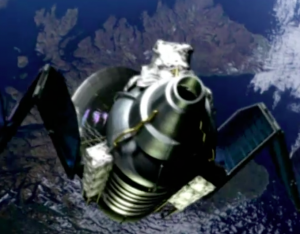 mrmackenzie
mrmackenzie
robot radiotherapy
Last week, the BBC broadcast a Horizon programme about new cancer treatments being trialled at the Royal Marsden Hospital in London. The documentary followed three different types of treatment; robotic surgery, a genetically targeted drug and a radiotherapy robot.
As we’ve discovered, standard radiotherapy treatment involves splitting the required dose into 3 beams, so only cells inside the tumour receive the full dose. The radiotherapy robot, CyberKnife, allows high energy x-rays to enter the patient’s body from many different angles. The advantage of this robot is that it minimises the risk to healthy tissue while ensuring a fatal dose of energy is delivered to the cancer cells.
I have put together a series of clips from the programme to follow patient Ray’s treatment. The clip from the planning meeting shows just many individual beams the robot will use during the treatment.
To find out more about how x-rays affect living cells, watch this clip from Bang Goes the Theory.
The Royal Marsden Hospital has a video that provides a quick guide to radiotherapy.
Use the download link below if you would like to save a copy of the CyberKnife video.
higher past papers 1992-2011
Higher Physics past papers and solutions are now available here.
how satellites rule our world
BBC2 showed a really good programme about satellites last night. This screenshot showing a satellite passing over the Highlands is taken from about 17 minutes into the show. Click on the picture to visit the BBC’s own page about the documentary.
It was quite eye-opening to see just how much modern society relies on satellite technology.
You can download the entire programme using the link below.
S3 credit electricity revision
If you found the general test tricky, here is something to help you prepare for the credit test on Thursday morning. Click on the download link to get your own copy of a full set of notes on the Using Electricity unit.
Thanks to Mr Cunningham for sharing these notes.
ray diagram revision
We’ve reached the Space unit and are almost at the end of the course. I showed you how to draw ray diagrams when we looked at lenses during the Health Physics unit. Some people have asked me to repost these video clips as they were not sure how to draw ray diagrams for our telescope this morning.
Watch these clips and make sure you know the six terms we use to describe the image formed by a lens. You should be able to select three words to describe the image in your ray diagram.
how to draw a ray diagram from mr mackenzie on Vimeo.
The second video looks at a ray diagram when the object is less than one focal length away from the lens.
ray diagram for objects closer than 1f from mr mackenzie on Vimeo.
Once the ray diagram is complete, we need to describe the image that has been formed. The description must tell us about the size, orientation and type of image that is formed.
Size
If the image is larger then the original object, we say the image is magnified
If the image is smaller than the original object, we say the image is diminished.
Orientation
If the image is the same way up as the object, we describe it is upright.
If the image is upside down compared to the object, we describe it as inverted.
Type
If the object and image are on opposite sides of the lens, it is a real image.
If the object and image are on the same side of the lens, it is a virtual image.
S3 electricity revision
Here’s some mains electricity revision for the cat lovers in S3. Remember that your tests are on Tuesday and Thursday. Ignore the 5A fuse stuff in the link, you should always select a 3A or 13A fuse.
AH investigation report
This week is your last chance to submit a draft of your investigation report for proof reading. I have already given you a copy of the SQA guidelines for candidates. You might also find the attached uncertainties document helpful. Pay special attention to the final page; reports that fail to account for calibration uncertainty will be penalised by the external marker.
If you are struggling with uncertainties in Excel, have a look at the two linest documents I posted earlier this year.



